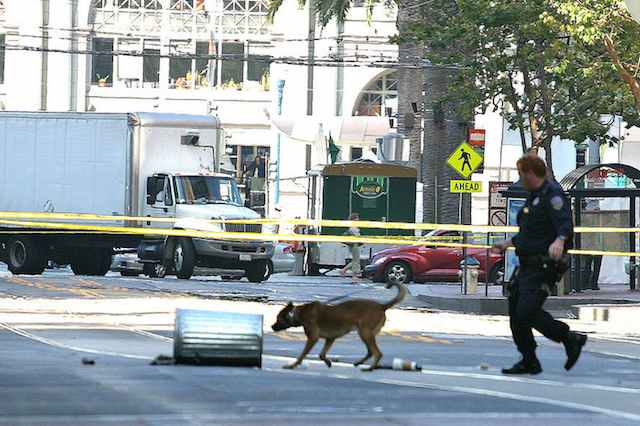New technology under development at UC Berkeley could soon give bomb-sniffing dogs a pink slip.
A team of UC Berkeley researchers has found a way to dramatically increase the sensitivity of a light-based plasmon sensor to detect incredibly tiny concentrations of explosives. The researchers noted that the sensor could potentially be used to sniff out a hard-to-detect explosive popular among terrorists.
The new sensor could have many advantages over current bomb-screening methods.
The sensor also could be developed into an alarm for unexploded land mines that otherwise are difficult to detect, the researchers said.
The engineers put the sensor to the test with various explosives – 2,4-dinitrotoluene (DNT), ammonium nitrate and nitrobenzene – and found that the device successfully detected the airborne chemicals at concentrations akin to a blade of grass in an entire football field.
The results are much more sensitive than those published to date for other optical sensors.
“Optical explosive sensors are very sensitive and compact,” said Xiang Zhang, who led the research as a professor of mechanical engineering and director of the Materials Science Division at the Berkeley Lab. “The ability to magnify such a small trace of an explosive to create a detectable signal is a major development in plasmonsensor technology, which is one of the most powerful tools we have today.”
The team’s findings were published in the July publication of the journal Nature Nanotechnology.
(LEARN more at Berkeley.edu News) – Photo by Thomas Hawk, CC license
Story tip from Lawrence Fernald




















